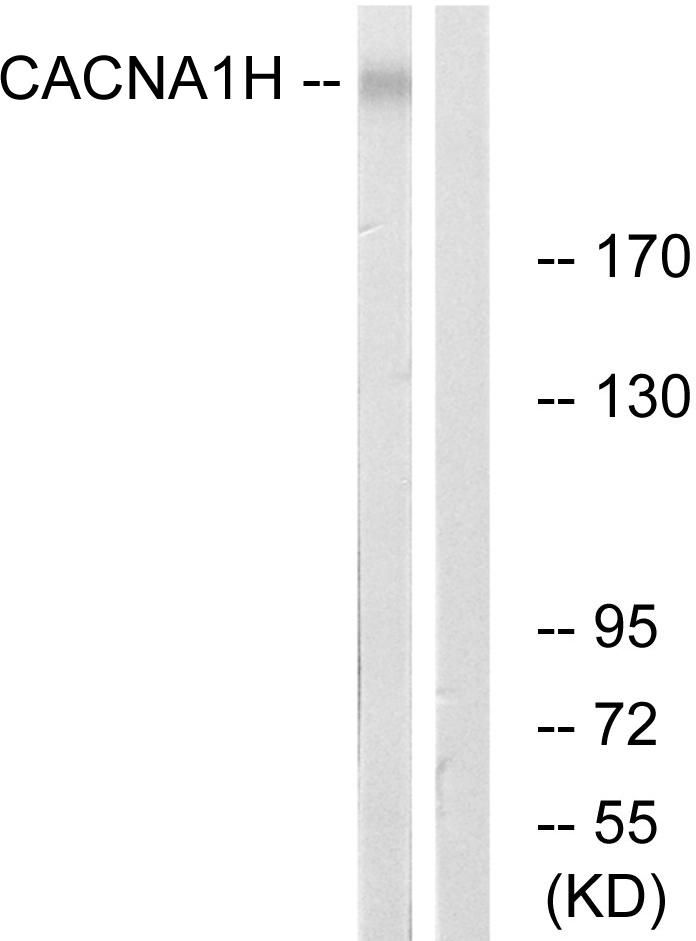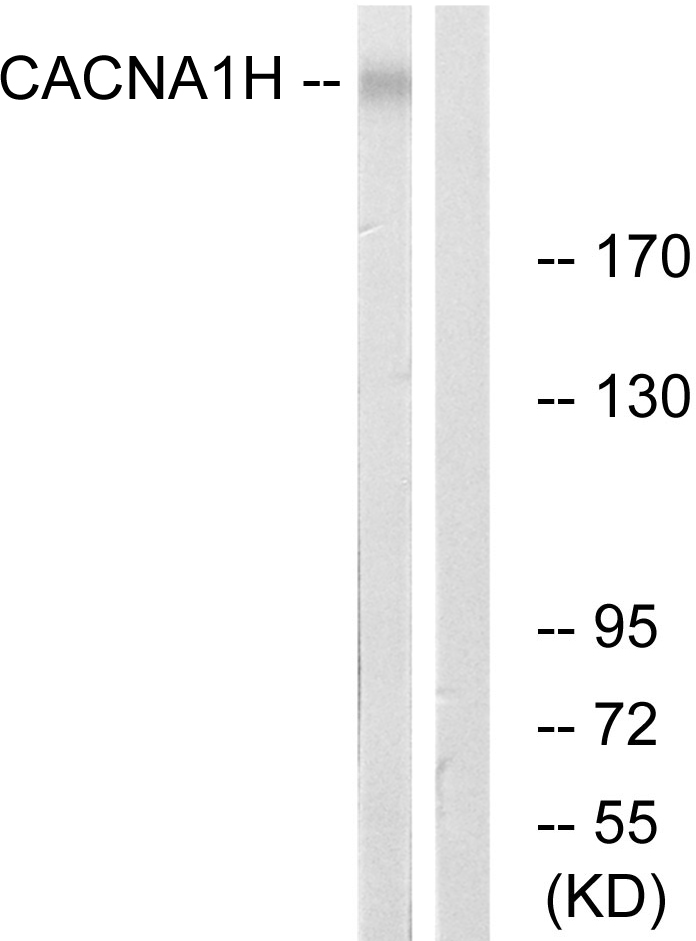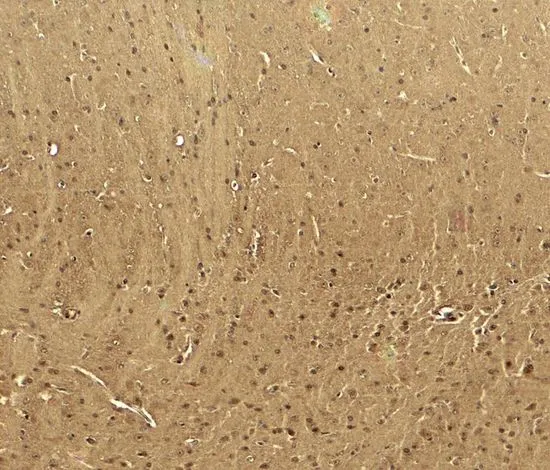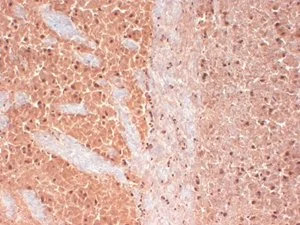
WB analysis of A549 cell lysates using GTX87612 Cav3.2 antibody. The lane on the right is blocked with the synthesized peptide.
Cav3.2 antibody
GTX87612
ApplicationsWestern Blot
Product group Antibodies
TargetCACNA1H
Overview
- SupplierGeneTex
- Product NameCav3.2 antibody
- Delivery Days Customer9
- Application Supplier NoteWB: 1:500~1:1000. *Optimal dilutions/concentrations should be determined by the researcher.Not tested in other applications.
- ApplicationsWestern Blot
- CertificationResearch Use Only
- ClonalityPolyclonal
- ConjugateUnconjugated
- Gene ID8912
- Target nameCACNA1H
- Target descriptioncalcium voltage-gated channel subunit alpha1 H
- Target synonymsCACNA1HB, Cav3.2, ECA6, EIG6, HALD4, voltage-dependent T-type calcium channel subunit alpha-1H, calcium channel, voltage-dependent, T type, alpha 1H subunit, calcium channel, voltage-dependent, T type, alpha 1Hb subunit, low-voltage-activated calcium channel alpha1 3.2 subunit, low-voltage-activated calcium channel alpha13.2 subunit, voltage dependent t-type calcium channel alpha-1H subunit, voltage-gated calcium channel alpha subunit Cav3.2, voltage-gated calcium channel alpha subunit CavT.2, voltage-gated calcium channel subunit alpha Cav3.2
- HostRabbit
- IsotypeIgG
- Protein IDO95180
- Protein NameVoltage-dependent T-type calcium channel subunit alpha-1H
- Scientific DescriptionThis gene encodes a T-type member of the alpha-1 subunit family, a protein in the voltage-dependent calcium channel complex. Calcium channels mediate the influx of calcium ions into the cell upon membrane polarization and consist of a complex of alpha-1, alpha-2/delta, beta, and gamma subunits in a 1:1:1:1 ratio. The alpha-1 subunit has 24 transmembrane segments and forms the pore through which ions pass into the cell. There are multiple isoforms of each of the proteins in the complex, either encoded by different genes or the result of alternative splicing of transcripts. Alternate transcriptional splice variants, encoding different isoforms, have been characterized for the gene described here. Studies suggest certain mutations in this gene lead to childhood absence epilepsy (CAE). [provided by RefSeq, Jul 2008]
- Storage Instruction-20°C or -80°C,2°C to 8°C
- UNSPSC12352203







